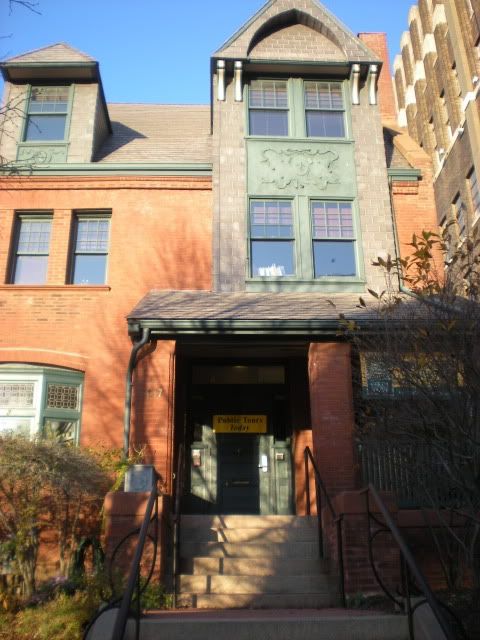
The Earthways Center is a demonstration "green" home that is part of the Missouri Botanical Garden. Built in 1885, the house was abandoned in the 1960s and eventually taken over by Grand Center. The Botanical Garden gutted and remodeled the house in 1994 and has retrofitted it with solar and geothermal power, Energy Star appliances, CFL and LED lighting, and recycled or sustainable flooring (and that's just the short list.)
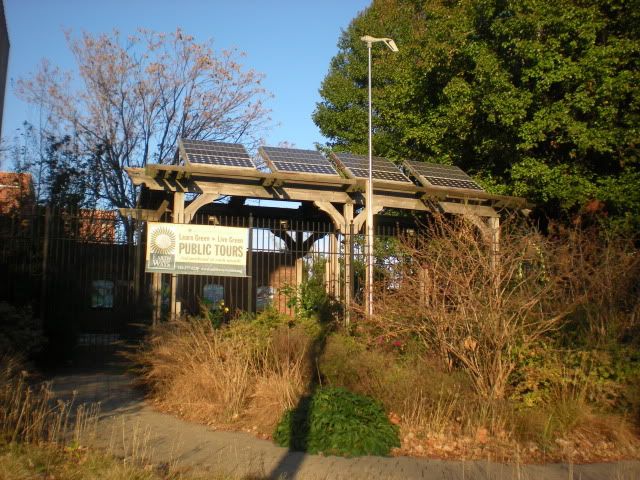
I'm going to jump around a bit between floors so you can see how the systems work together. Above are the solar panels on a pavilion in the back yard. The next picture is in the basement, where the collected energy is stored in batteries in that glass-topped case.
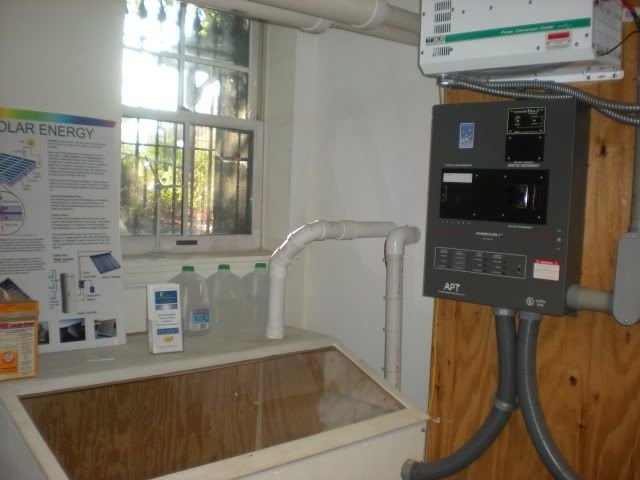
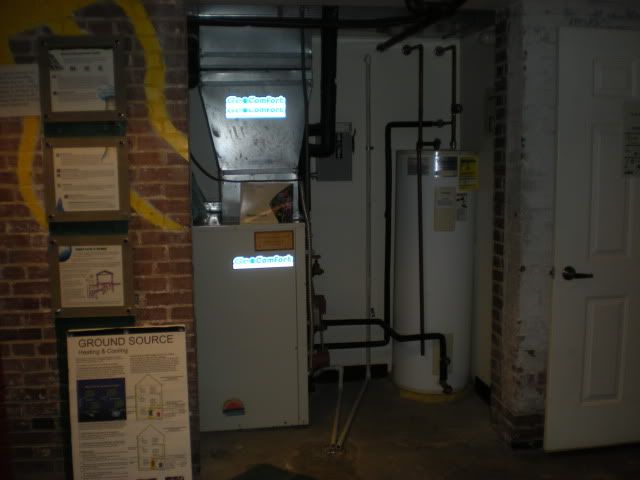
Here is the geothermal unit in the basement. Geothermal heating and cooling works by circulating a water-based solution through a buried loop system. Once you get a few feet down, ground temperature stays relatively constant. A geothermal unit practically eliminates your utility bills. Most of the cost is in the installation.
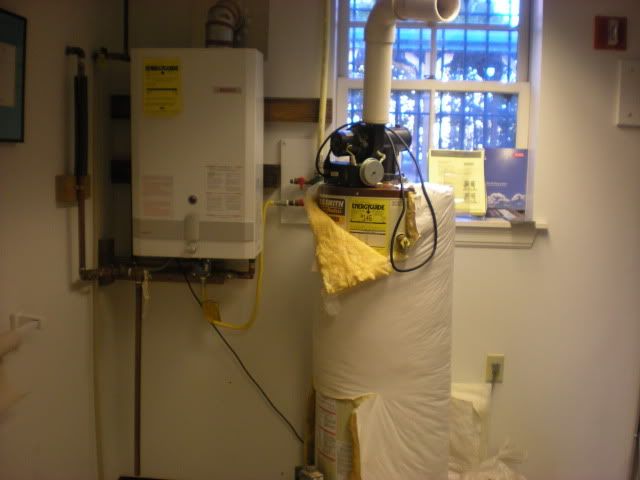
There is also a "regular" high-efficiency gas furnance that I didn't take a picture of. Above is both a conventional hot water heater and a tankless hot water heater. A tankless heater heats the water as you use it, rather than having a big storage tank. I've heard that tankless water heaters take forever to recover the cost of the unit and installation, so if anyone reading this actually has one, I would love to hear what you think of it.

Back outside! Here is their little potting shed and composting area. First, the pavilion. This was built to demonstrate the "living roof." They couldn't install it on the actual house because the pitch of the roof is too steep. This is meant for flat roofs. As many of you St Louis city-dwellers know, a flat roof is usually black tar, and black roofs and asphalt are the reason for the heat island effect. Installing a living roof, or even painting your roof white, helps reflect some of this trapped heat.
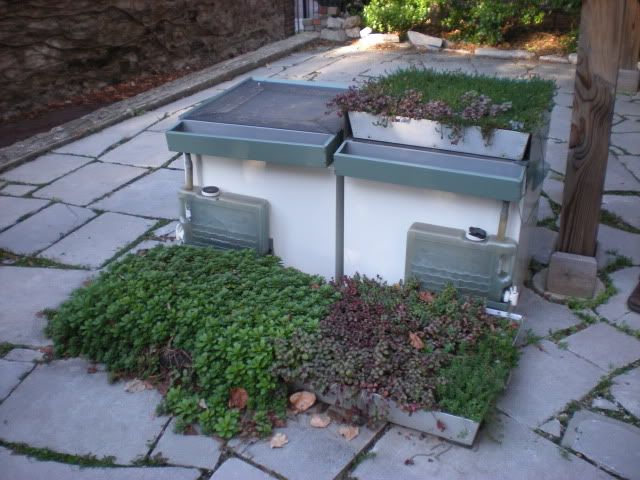
The living roof can be trays, or bags, of soil, and provides an excellent layer of insulation, improves drainage, and creates green space in areas that would normally have little to none. Here is the view from the second floor:
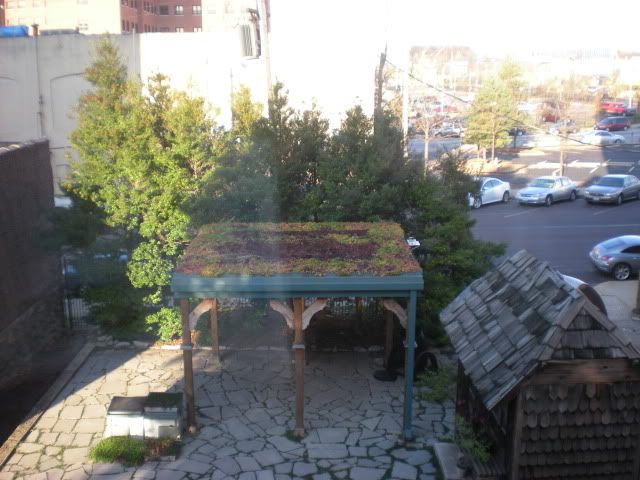
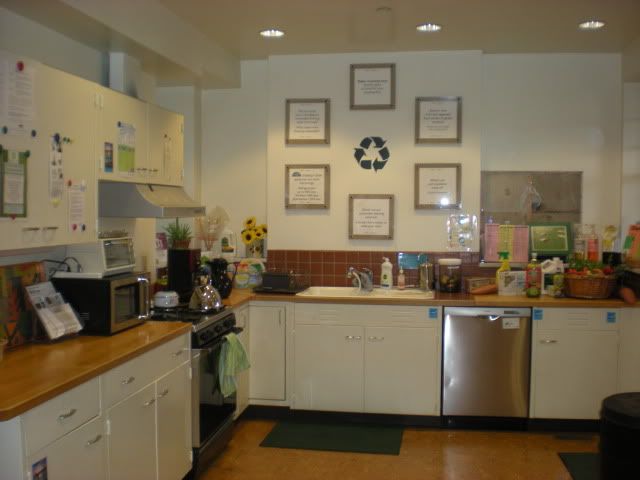
Back inside! Here is the green kitchen. The cabinets and appliances are from the Habitat for Humanity ReStore, showing that you don't always have to buy new things made out of recycled materials. You can make old stuff new-to-you and support Habitat for Humanity at the same time!
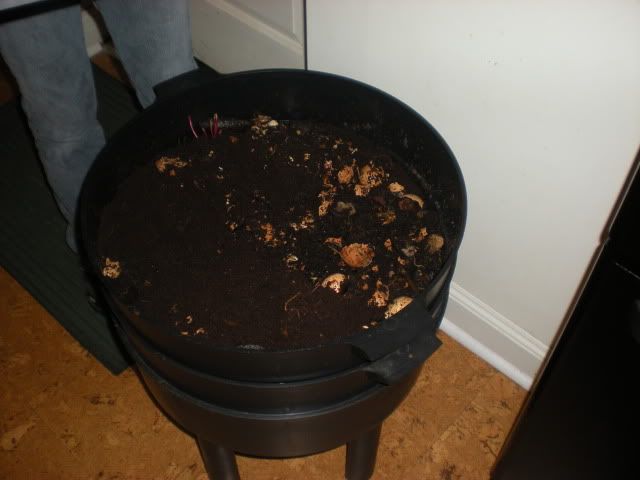
The floor in the kitchen is cork, made from the bark of the cork tree. The bark just keeps growing, which makes cork a sustainable floor. You guys know I'm a nerd about the floors (in fact, my company installed the Forbo Marmoleum on the stairs.) The real point of this picture, though, is the Can O Worms Composter
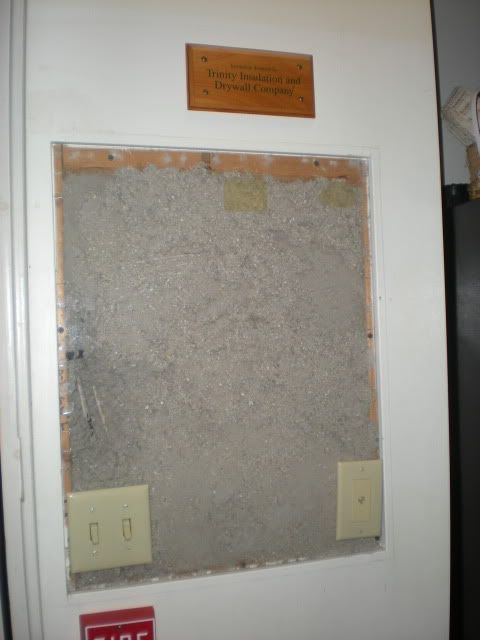
As long as we're in the kitchen, here's a view of the insulation. You will see in a couple pictures that the window sills are fairly deep. This is because brick houses were not usually built with much insulation, so when they gutted the house, they built the walls out with room for cellulose (shredded newspaper!) insulation.

This is super cool. It's a little sink that you install on the back of your toilet. When you flush, the water runs through that spigot BEFORE filling the tank, so your "gray" water from washing your hands or brushing your teeth is the water that fills the tank to flush the toilet. Apparently these are not available in the US yet, but it looks super easy to install (a simple tube connected to a standard flush mechanism) and demand begets supply! Start demanding!
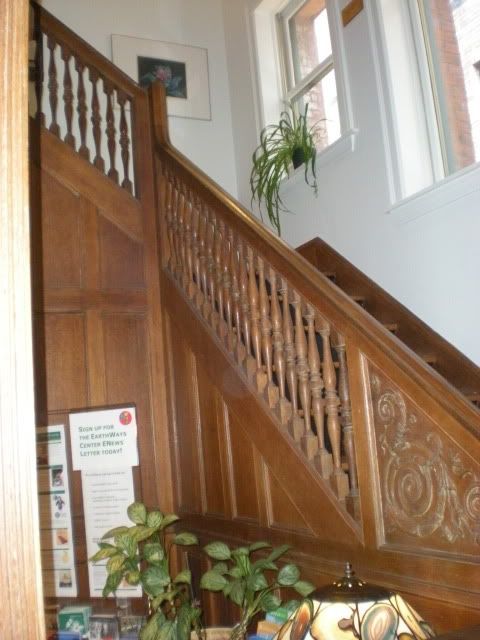
Back out in the hallway, here we have a cool story. This original woodwork survived vandalism and thievery because it was painting baby blue and pink at some point. It was restored to its natural finish with a citrus based paint stripper.
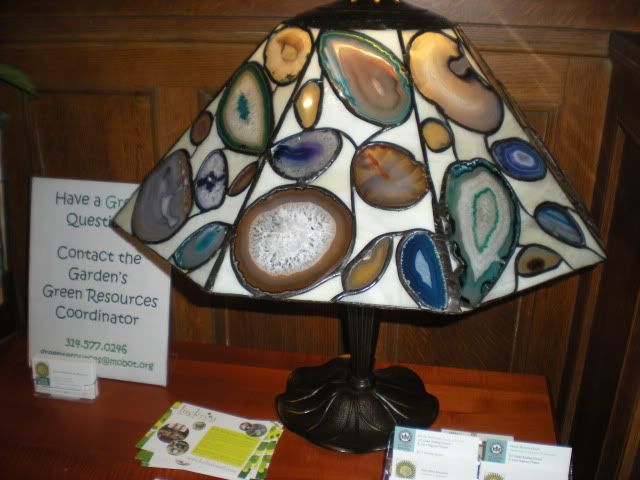
I just liked this little "stained glass" lampshade made out of slices of geodes.
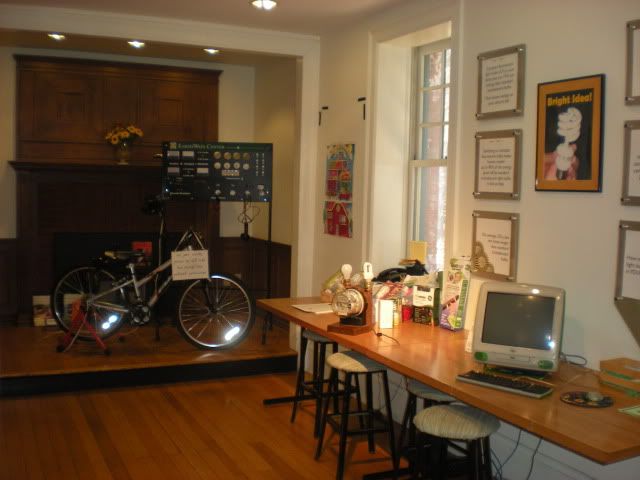
In what was formerly the dining room, there are displays of energy saving lighting options, and an "energy bike" to demonstrate how much more energy it takes to power an incandescent bulb vs a compact fluorescent bulb.
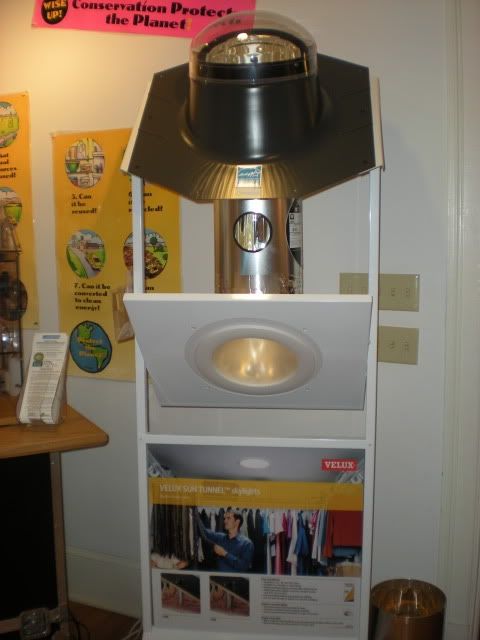
This is a model of a solar tube, the number one thing I covet for my house. When I get a new roof I want to put one in the kitchen and maybe one in the bathroom. You know flipping CFLs on and off cuts down on their lifespan, which makes them impractical for bathrooms. Plus, ladies, you know it's best to apply makeup in natural light!

This is a model of how an energy audit works. For more information, go to the Earthways Home Performance With EnergyStar web page.
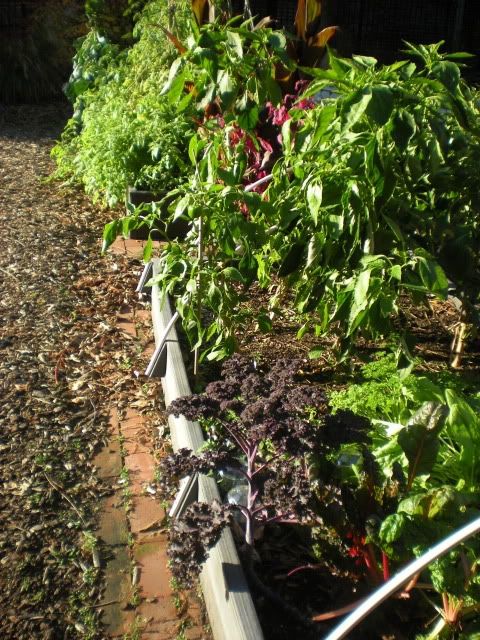
One last thing! This is, in my opinion, one of the coolest things that MoBot does. In the spring, they set up collection points for empty nursery pots, hanging baskets, and cell packs. They recycle those pots into "plastic lumber" which are then available for purchase. The raised beds in the picture are made from the kits that the Garden sells. The only downside is that they are pretty expensive, but they outlast railroad ties and the like, and they don't leach chemicals into your soil.
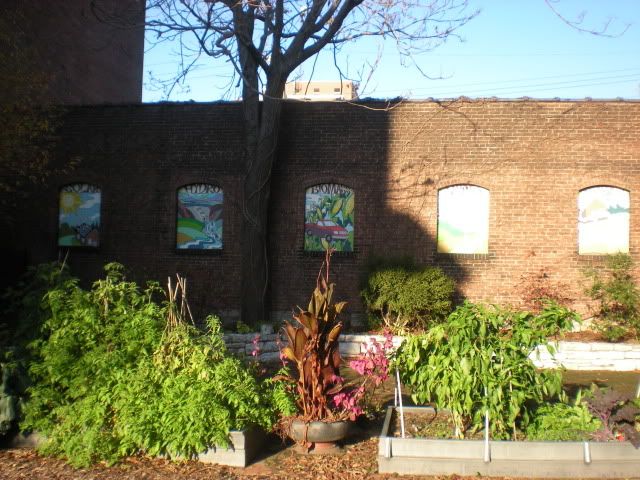
So there you have it. The Earthways Center is located at 3617 Grandel Square. As I said at the beginning, public tours are on the 3rd Saturday and Sunday of the month at 11am, 12pm, 1pm, and 2pm. Cost is $3 (free if you are a member of the Missouri Botanical Garden.) The center is also available for private tours and field trips, and they have classes throughout the year. See the website for the event calendar.

The article presented here is very effective and of high quality. I hope you continue to write us a quality content like this story and I personally always'll follow articles and this amazing site.
ReplyDeleteאיטום גגות מרוצפים